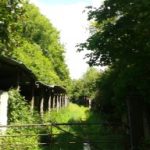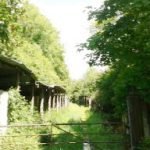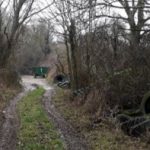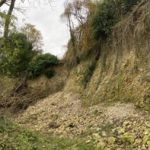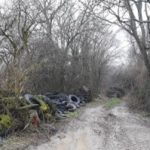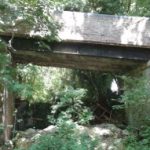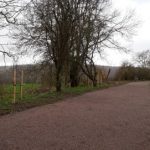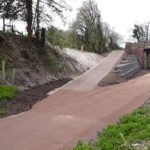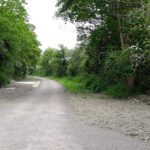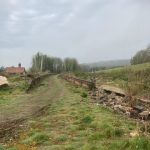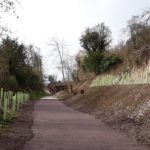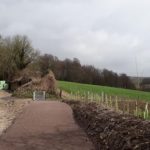Centurion Way Extension Project – Frequently Asked Questions
- What’s happening on the Centurion Way?
The Centurion Way is an 9km (5.5 miles) cycling and walking path between Chichester, Lavant and West Dean. It follows the old, dismantled Chichester to Midhurst railway line, which was fully closed by 1991.
Following the latest path upgrade in 2015 as part of a project led by the National Park Authority, work is currently under way to extend the Centurion Way by 5km (just over 3 miles) from West Dean to Cocking which was consented in late 2019.
- Why are you doing the work?
Once completed the route will provide a fantastic way for walkers and cyclists to travel from Chichester right into the heart of the South Downs National Park, experiencing wonderful views along the way. The route will link with the 100-mile-long South Downs Way at Cocking, providing further opportunities for people to explore the National Park.
The project is in tandem with the National Park’s goal of creating more opportunities for people to access nature, as well as encouraging sustainable transport as a positive step towards climate action.
- Do you have a timeline of the work and when it will be completed?
The construction of the extension from West Dean to Cocking is a challenging undertaking that requires careful ecological planning, considerable resources and co-ordination with many landowners and stakeholders and will take several years to achieve. To manage this complexity, the route is being completed in sections as shown in the map below:
Following extensive works over the past few years, the first section of the Centurion Way will open on Saturday 23 August 2025. This schedule is subject to all remaining works being completed without further complications and external factors out of our control, such as weather.
The path construction of the southern sections from West Dean, northwards through to Cucumber Farm is almost complete, subject to final fencing and tree safety works identified in the annual inspection survey. Significant safety and restoration works are being undertaken at Singleton Station to stabilize the former station platforms and adjacent structures to ensure the area is safe and can be enjoyed by the public when the extension opens.
Reinstatement works have been completed to improve the footway link on the A286 to 1.5m width between the existing Centurion Way adjacent to the school, through the village to the new extension opposite the West Dean College entrance and beyond to Singleton Station approach opposite the West Dean Gardens entrance.
Ecological and tree assessments on the next section northwards, through Rooks Wood / Wellhanger Copse to Littlewood Farm are ongoing prior to construction works, which are hoped to commence in Winter 2025.
Construction will continue through 2025/26/27 to extend the route northwards to Cocking Hill and the South Downs Way and it is hoped the whole route will be completed in 2027. This schedule is subject to landowner consent, other agencies’ approval and securing the necessary funding.
The future route remains closed to the public. In the interest of public safety and landowner relationships, the South Downs National Park Authority, Edward James Foundation, National Trust and Cowdray urge the public to not trespass onto private land and not place themselves at unnecessary risk until the route is open.
- Do you have before and after shots of the work?
Yes.
Before:
After:
- Will the tunnels along the old railway line be used?
There are three tunnels along the route: West Dean, Singleton, and Cocking and the approved route deviates to avoid them. The route around West Dean Tunnel utilises a section of the A286 where the footway has been widened for pedestrians. The path will pass through scenic woodland to deviate around Singleton Tunnel and, a ramp will connect the path from the cutting to avoid Cocking Tunnel, to connect with Hoefield Lane Bridleway, above the tunnel and onwards to the South Downs Way.
We are actively exploring a possible new connection route with stakeholders that bypasses both West Dean Tunnel and the road.
Currently, there is no consent to use any of the tunnels and there is no intention of going through them.
- Will cyclists and walkers have to use the road at all?
Because of the current restrictions of the West Dean Tunnel, we have reinstated the footway along the A286 to 1.5m width to provide a continuous link for pedestrians, the less able and children (under 10 years old) cycling.
- Who will be eligible to use the extension?
As the open sections of Centurion Way, pedestrians and wheeled-users including the less able (including wheelchair and mobility scooter users) and cyclists. A ramp, similar to the existing ramp next to the school in West Dean will be installed to give ‘at grade’, step free access to the new extension. There will also be ‘at grade’ access for path users to Singleton Station via the approach road, opposite the entrance to West Dean Gardens.
There will be no access for equestrians on the new extension. Private access for the West Dean Livery Stables remains in place for a short section (approx. 250m) of the open section south of the school in West Dean. This allows for access for the horses from the west to the east side of the A286 using Centurion Way.
- How has the route been chosen?
The route follows the disused railway line from Chichester to Cocking which provides a liner route suitable for repurposing as a multiuser trail. The route design follows current best practice design principles that networks and routes should be Coherent; Direct; Safe; Comfortable and Attractive. Consent for the route was secured in 2019, following a full consultation and public planning application over a several year period. As required due to the passing of time, time sensitive habitat assessments (in consultation with the Sussex Bat Group), ecological, and arboricultural surveys are being undertaken to assess the current status and changes of each, to inform designs, mitigations, construction and ecological management plans.
Following a nine-month pre-consultation with stakeholders, a potential alternative route through Rooks Wood / Wellhanger Copse will no longer be pursued and the consented route is considered to be the most viable option at this time.
- Have you had to remove trees as part of the construction?
Some trees have had to be removed to enable the path construction. Unfortunately, many additional Ash trees suffering from Ash Dieback also needed to be removed. All the work has been carefully overseen by professional ecologists to minimise impact, and a significant number of new trees are being planted along the route to help nature thrive. The new restocking of the route, which is a condition of planning and felling licences aim to improve the resilience and diversity of the habitat along the route. An extensive ten-year Landscape and Ecological Management Plan details all of the planting, mitigation measures and management duties that will be undertaken by SDNPA and appointed contractors.
- Are there any plans to join the Centurion Way to nearby villages with access tracks?
The SDNPA are actively looking to improve community links to the Centurion Way and support communities wishing to improve Public Rights of Way connections. A group of stakeholders supported by SDNPA are exploring the potential to provide a direct connection from Singleton village to the Centurion Way for wheeled-users who currently are unable to use the existing public footpath.
- Who is funding the work?
The work is being funded from a number of sources, including Community Infrastructure Levy (CIL) and Section 106 funding and South Downs National Park Trust donations.
- When the route is completed, who will maintain it?
The SDNPA will be responsible for the ongoing management and maintenance of the extended route. West Sussex County Council remain responsible for adjoining Public Rights of Way.
- How can I be kept updated on progress?
This page will be updated as and when there are updates to share.


